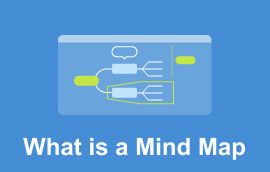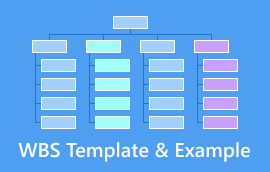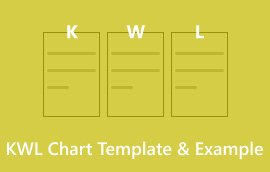What is the Work Breakdown Structure and How to Create it
Work Breakdown Structure (WBS) is commonly used in project management. It assigns work to teams and further refines tasks into specific steps, which can complete the project plan faster and more efficiently. But do you know what it isand how to use it? This article will provide some information about the WBS in six aspects. Read on to learn more.

- Part 1. The Meaning of WBS
- Part 2. The Elements of WBS
- Part 3. Use Cases of WBS
- Part 4. When to Use WBS
- Part 5. The Benefits of WBS
- Part 6. How to Make a Chart for Work Breakdown Structure Using MindOnMap
- Part 7. FAQs
Part 1. The Meaning of WBS
The Work Breakdown Structure (WBS) is a visual project management tool that simplifies large projects by breaking them down into smaller, more manageable tasks. This makes it easier for teams to identify scope, cost, and deliverables, as well as assign tasks to the team members who are most suitable for the job. This tool is usually used to plan, organize, and track progress. It is an outline that presents information from the highest to the lowest level, with each task being associated with the one above it.
Part 2. The Elements of WBS
Work Breakdown Structure (WBS) is a hierarchical organizational structure that breaks down a project into smaller and more manageable parts. It consists of the following main elements:
• Project deliverables.
The deliverable is the product or service that the customers will receive at the completion of the project. Additionally, the total amount of the work in the lower levels of the WBS should be equivalent to the sum of the work in the higher levels.
• Clear hierarchy.
The project scope of the WBS should be hierarchical. Large and small projects underneath are clearly defined to facilitate the accomplishment of the objectives.
• Level of detail.
The level of detail in the WBS depends on the size of the project, but it doesn’t need to be too detailed. It is only meant to approximate the exact project scope.
• WBS dictionary.
The WBS dictionary is an important part of the WBS that contains all relevant project information and can define the various WBS elements. It helps to clarify the scope of each task and the responsibilities of team members.
• Work packages.
The work package is the smallest unit of work in the WBS. It allows the project to be broken down into the most manageable parts and then assigned to team departments or members.
Part 3. Use Cases of WBS
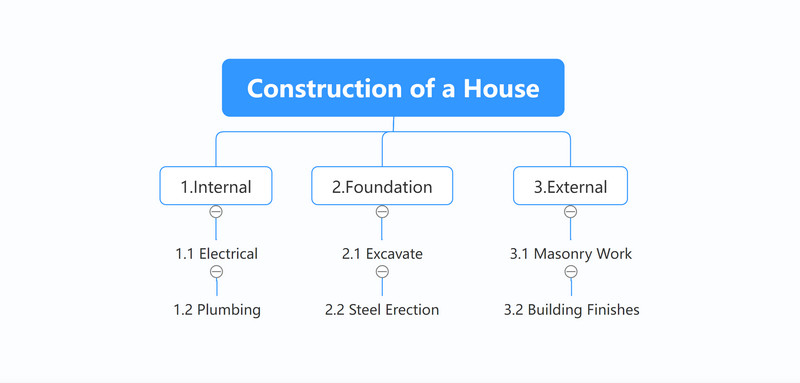
The image above is a work breakdown structure use case for building a house. In the image, the Level 1 elements, Internal, Foundation, and External are deliverable descriptions. The Level 2 elements, such as Electrical, Excavate, etc., in each branch of the WBS, are all the unique deliverables required to create the corresponding Level 1 deliverable.
The structure of WBS is organized as follows:
Level 1: Construction of a House.
Level 2: Internal, Foundation, External.
Level 3: Electrical, Excavate, Masonry Work, Plumbing, Steel Erection, Building Finishes.
Part 4. When to Use WBS
Work Breakdown Structure (WBS) is often used at the beginning of a project. It has a variety of scenarios, and the detailed examples are as follows:
• Event scheduling.
Event planners need to develop a project schedule and timeline before the event begins. Then, they must make steady progress according to the plan to ensure that the event runs on time.
• Resource and budget allocation.
When starting a new project, resource planners need to plan project resources and allocate a proper budget for the project.
• Cost estimation of commercial projects.
Commercial project planners need to estimate all activity components, primarily the costs of the project, before the start of the commercial project in order to reduce potential risk.
• Project task assignment.
The WBS can assign tasks to all members of a large project, which is conducive to helping members move the project forward in their roles.
• Project progress tracking.
The WBS allows members of a company’s project team to know who did what and when at any time and helps keep team members up to date on project progress.
Part 5. The Benefits of WBS
Work Breakdown Structure (WBS) has many benefits for project management. It helps you to:
1. It develops the project schedule and tracks project progress.
2. It assigns tasks to the team members and provides clear descriptions of the tasks.
3. It improves communication between teams and individuals and allows them to focus.
4. It estimates project costs, allocates budgetary resources, and plans in an integrated manner.
5. It makes the project to be divided into smaller parts, which is simpler and easier to manage.
Part 6. How to Make a Chart for Work Breakdown Structure Using MindOnMap
MindOnMap is an easy-to-use mind-mapping maker. It has various applicable scenarios, including WBS project management. In addition, it is compatible with multi-platforms. You can download it on Windows or Mac and directly access it online from any browser.
Secure Download
Secure Download
The step-by-step guide on how to use it to create a chart for work breakdown structure is provided below.
Open MindOnMap, select the first button New on the left panel, and then you can choose the type of mind map you want, such as a Mind Map, Org-Chart Map, Tree Map, or other type. Here, we take the Org-Chart Map as an example.
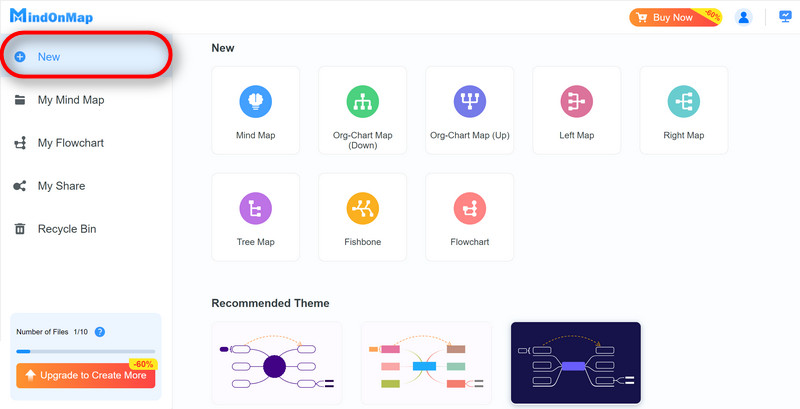
Click the Org-Chart Map (Down) button to enter the created interface. Then click on the Central Topic button and double-click to enter the topic you want to make for WBS.
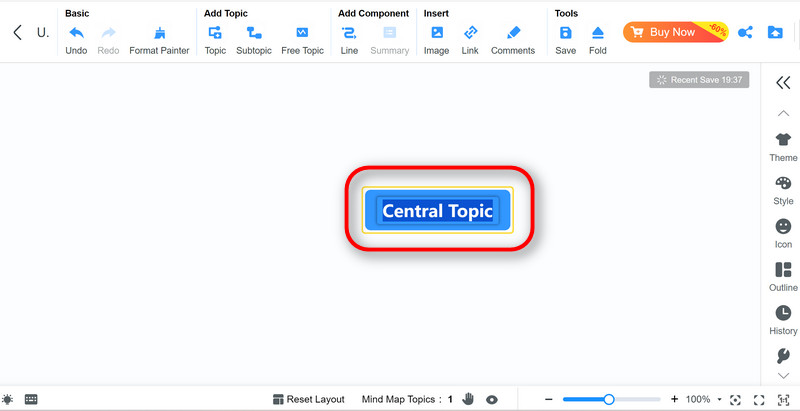
Clicking on the Topic button under the Add Topic option in the upper sidebar will bring up one branch of it, and a few clicks will bring up several branches, where you can enter the secondary title of your WBS.
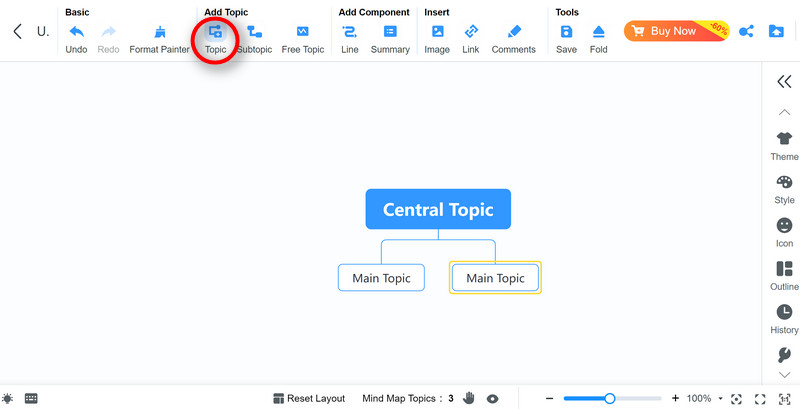
Then, if you have subtopics to add, click on the Main Topic and then the Subtopic button, smaller branches under that Main Topic will be expanded.
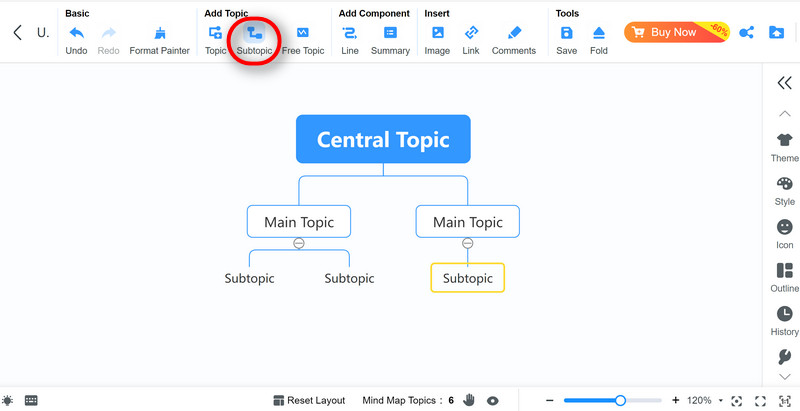
After finishing the WBS, click the Save button under the Tools option in the upper sidebar to save it. And then you can click the icon in the upper right corner to export it as an image or other file format.
Reminder: Free users can export common quality JPG and PNG images with watermarks only.
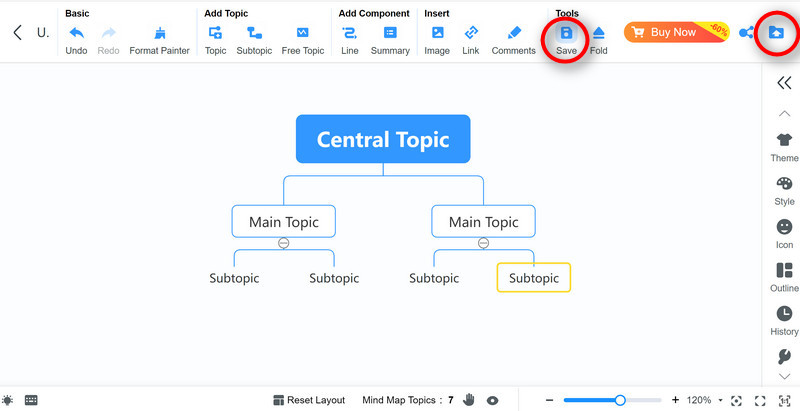
Tips: MindOnMap also has many extra functions if you need them, such as inserting images, links, and comments by clicking the Image, Link, and Comments button in the upper sidebar; the Theme, Style option in the right bar allows you to freely edit the theme, color, shape, etc., of the box; and the Outline option allows you to preview the entire structure of the chart. Moreover, there are many other features that you can explore by yourself!
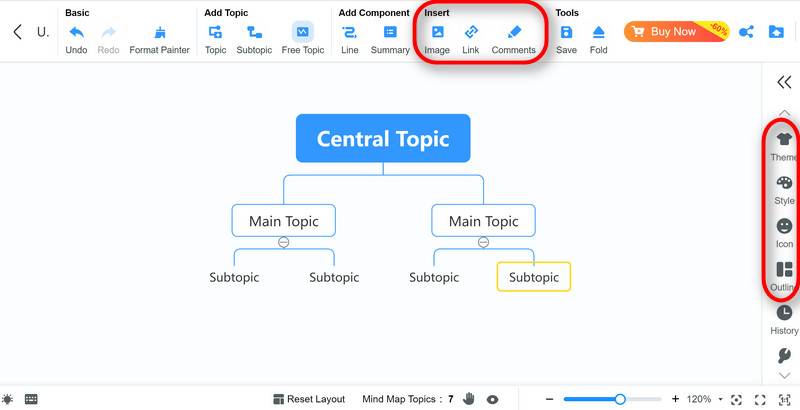
Part 7. FAQs
What are the 5 phrases of work breakdown structure?
The 5 phases of the work breakdown structure consist of initiation, planning, execution, control, and closeout.
What is an example of a WBS?
Take the work for the construction of a house as an example. It can be divided into Electricity, Plumbing, Excavation, Steel Erection, Masonry Work, and Building Finishes.
What is the difference between a WBS and a project plan?
The WBS is the critical component of the overall project. While the project plan contains other broader elements.
Conclusion
We are sure that through this article, you must have learned what WBS is in detail, from its meaning, elements, use cases, applicable scenarios, and benefits, to how to make it. It is commonly used in the workplace to divide large projects into smaller and more manageable tasks, which then can be distributed to members of the team. If you often need to create a chart for work breakdown structure in the work, MindOnMap is a good choice for you! It is intuitive and easy to use, which is very friendly for beginners. Have a try! It will make your work easier.








